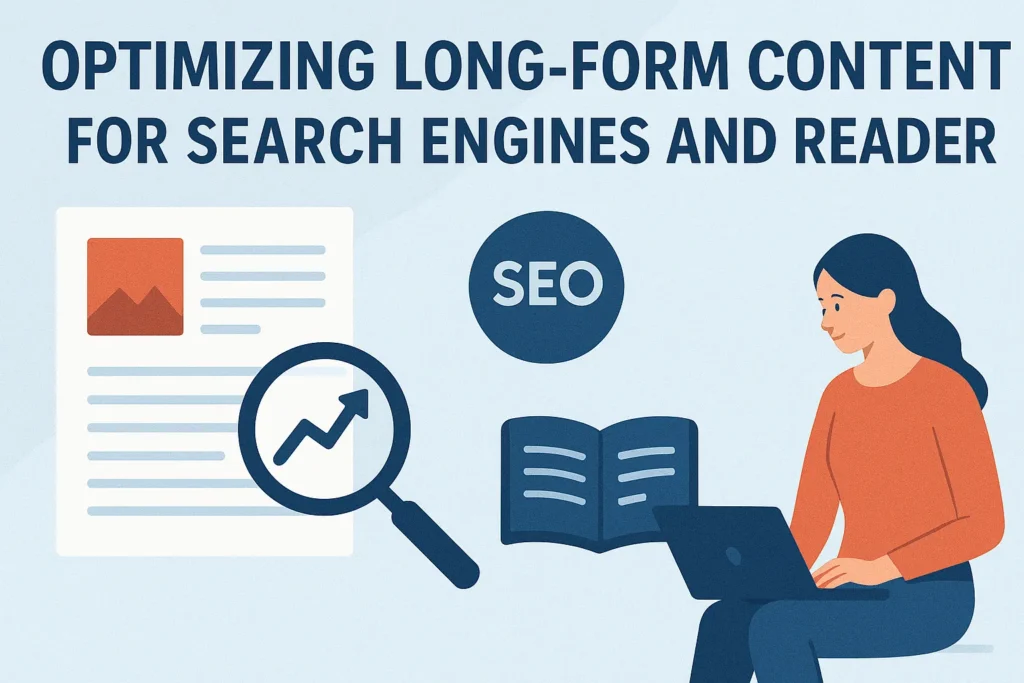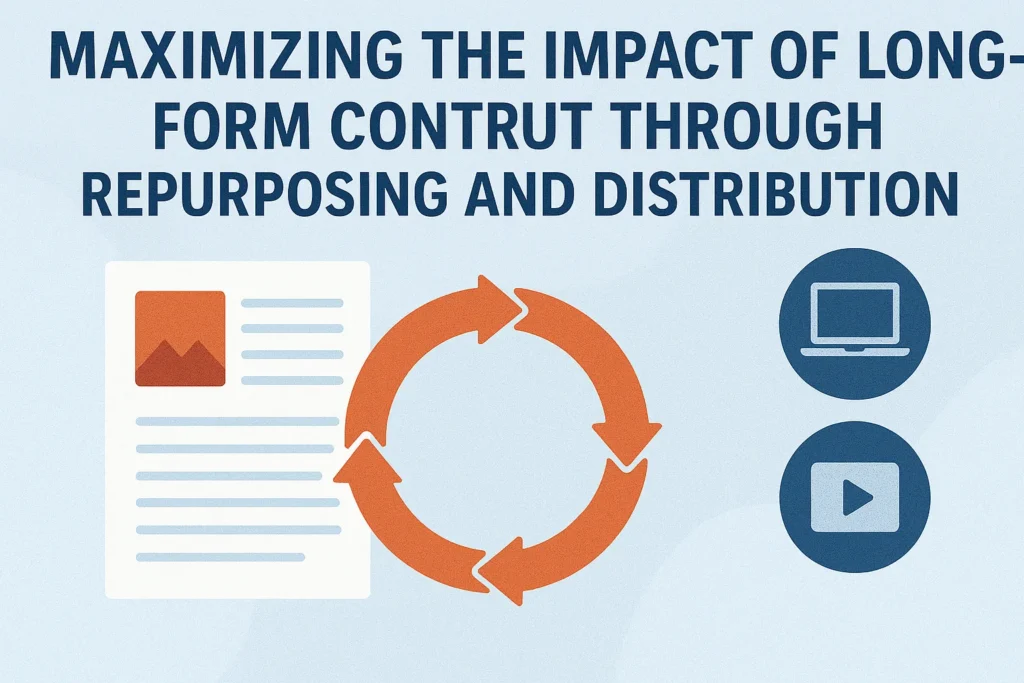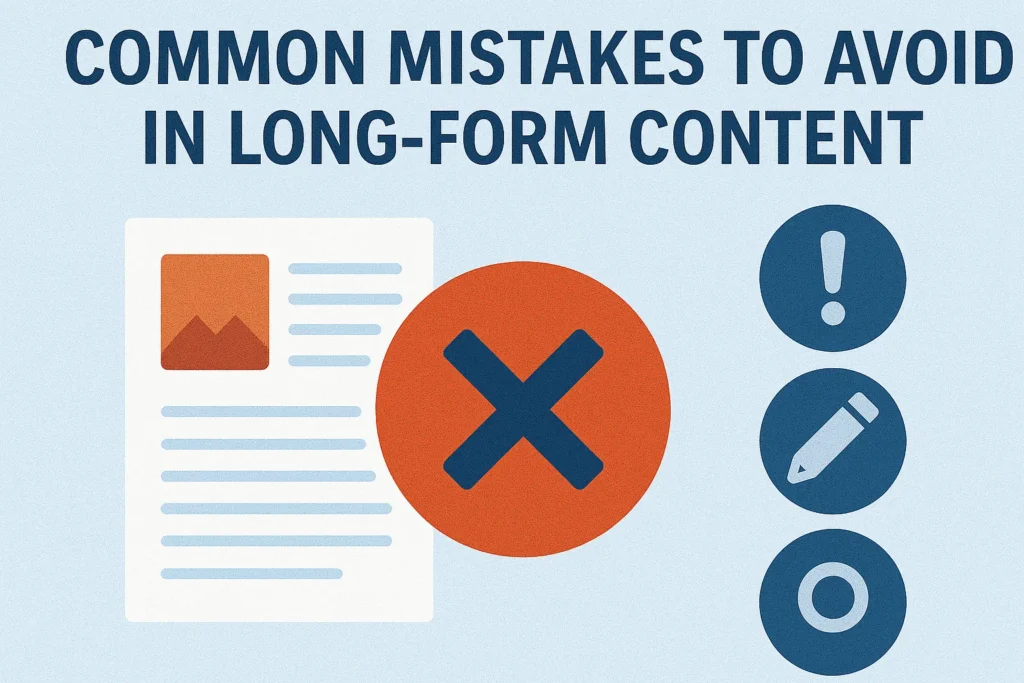You’ve put hours into writing a blog post, hit publish, and nothing happens. No traffic, no engagement, and no sign of ranking on search results. What went wrong?
Short, surface-level content no longer works. In today’s digital marketing scenario, a successful content marketing strategy must include long-form content.
Google favors pages that provide detailed, well-structured information because they answer search queries more effectively.
Think about your own content marketing efforts. Have you ever searched for an in-depth answer and landed on a short-form content post that barely scratched the surface?
You likely clicked away to find a valuable resource with more details. This is why creating long-form content is essential for improving organic traffic and driving better user engagement.
By the end of this guide, you’ll know:
- Why long-form content SEO helps content rank higher.
- How to structure and optimize long-form blog posts for search engines.
- The best strategies to distribute and repurpose your content across multiple platforms.
If you want to build a successful content marketing strategy that attracts your target audience, keeps them engaged, and helps you generate leads, keep reading.
The Power of Long-Form Content in SEO and Content Marketing
Creating high-quality content is not just about filling up pages with words. A successful content marketing strategy requires content that engages users, answers their questions, and provides in-depth information. This is why long-form content SEO is one of the most effective ways to improve search rankings and drive organic traffic.
What is Long-Form Content?
Many marketers think long-form content is simply any article with more than 1,500 words, but true in-depth articles go beyond length. They cover a topic comprehensively, provide value to the target audience, and are structured for SEO success.
Common formats of long-form content include:
- Pillar content that serves as the foundation for related blog posts and social media discussions.
- Long-form video content, which expands on written topics through visual storytelling.
- In-depth articles with original research, expert insights, and case studies.
Unlike short-form content, which briefly touches on a subject, long-form writing explores multiple angles, making it a valuable resource for readers looking for detailed solutions.
Why Google Prefers Long-Form Content
Google’s algorithm prioritizes content that satisfies user intent by answering questions thoroughly. A study by Backlinko found that the average first-page search result contains 1,890 words, showing a direct correlation between content length and rankings.
Here’s why long-form content works better than short-form content for SEO:
- It provides more keyword opportunities – A longer post naturally includes primary, secondary, and long-tail keywords, increasing its visibility on search engines.
- It increases engagement – Well-structured in-depth articles encourage users to stay on the page longer, signaling to Google that the content is valuable.
- It ranks for multiple queries – A single long-form blog post can attract visitors searching for different aspects of the same topic.
By strategically using keyword research, marketers can create successful content that meets both search engine requirements and audience preferences.
How Long-Form Content Supports Your Content Marketing Efforts
A well-executed long-form content strategy does more than improve SEO success. It helps businesses generate leads, nurture relationships with potential customers, and establish credibility.
Here’s how long-form content contributes to a successful content marketing strategy:
- Builds trust and authority – High-quality in-depth content positions your brand as a thought leader in your industry.
- Encourages social media engagement – Readers are more likely to share valuable content on social media platforms when it offers detailed insights.
- Supports lead generation – Gated content, such as long-form whitepapers and guides, can be used to generate leads and drive conversions.
If you want to stay ahead in today’s competitive digital space, writing long-form content should be a key part of your content marketing efforts.
The Content Creation Process: Planning for SEO Success
A successful content marketing strategy does not rely on guesswork. The most effective long-form content is carefully planned, structured, and optimized before a single word is written.

Effective content creation involves competitive research, keyword analysis, and workflow planning. This ensures that long-form content is well-structured, optimized, and valuable to the audience.
Research and Competitive Analysis
Before creating content, understanding what already exists in your niche is essential. Competitive research helps identify high-ranking content, spot gaps, and develop a unique angle that sets your content apart.
Steps to Conduct Competitive Research for Long-Form Content
- Analyze Top-Ranking Articles – Search for your target keywords and review the top-performing articles. Identify common themes and successful content formats. According to Search Engine Journal, analyzing competitors helps businesses refine their content strategy and improve search rankings.
- Evaluate Content-Length – Determine the content length of high-ranking pages. Research from HubSpot shows that blog posts exceeding 2,500 words tend to perform better in search results.
- Identify Missing Information – Look for unanswered questions in competing content and ensure your own strategy fills these gaps.
- Examine User Engagement – Check social media sites and blog comments to understand what readers find useful or lacking in existing content.
Competitive research ensures that your content marketing efforts are based on data rather than assumptions, leading to higher engagement and better search rankings.
Building a Content Calendar for Consistency
A content calendar is a roadmap for publishing long-form content consistently. It helps marketers allocate resources, manage deadlines, and ensure that content aligns with business goals.
How to Build an Effective Content Calendar
Plan Topics Around High-Value Keywords – Use keyword research tools like Google Keyword Planner to find search terms with high traffic potential.
Include Multiple Content Formats – Balance blog posts, long-form video content, and in-depth articles to cater to different audience preferences.
Schedule Regular Updates – Refreshing old content with new data and insights improves search rankings over time, as recommended by Moz.
Align Content with Seasonal Trends – Publishing timely content can drive higher engagement, especially on social media platforms.
By maintaining a documented content marketing strategy, businesses can ensure that every piece of content contributes to SEO success and audience engagement.
Allocating Resources for Content Production
Creating high-quality long-form content requires time and expertise. Businesses must decide whether to produce content in-house or outsource to specialists.
Key Considerations for Content Production
- In-House Content Teams – Best for businesses with dedicated writers and SEO specialists.
- Freelancers and Agencies – Ideal for scaling content production while maintaining quality. Platforms like Upwork and ClearVoice connect businesses with experienced content creators.
- AI-Assisted Writing – Helpful for outlining and brainstorming but requires human editing to maintain accuracy and engagement.
An efficient content workflow ensures that every piece of long-form content is well-researched, structured, and optimized before publication.
Optimizing Long-Form Content for Search Engines and Readers
Creating long-form content is only half the battle. To drive organic traffic and improve SEO success, content must be structured, formatted, and optimized for both search engines and readers. Without proper optimization, even the most valuable content may not rank well in search results or engage the target audience.

Structuring for Readability and SEO
A well-structured content strategy improves both user engagement and search visibility. According to Yoast, well-organized content helps search engines understand the main topics of a page, making it more likely to rank higher.
How to Structure Long-Form Content for Maximum Impact
- Use Headings Effectively – Break content into H2 and H3 sections with relevant keywords. This improves readability and helps search engines recognize key topics.
- Incorporate Short Paragraphs – Large text blocks discourage readers. Keep paragraphs between 2–3 sentences for easy scanning.
- Utilize Bullet Points & Numbered Lists – These make in-depth content digestible and increase social media engagement when repurposed into social media snippets.
A well-structured page keeps visitors on the same page longer, reducing bounce rates and increasing time spent on site, both critical SEO success factors.
Optimizing for Keywords Without Overstuffing
Keyword usage should feel natural rather than forced. Google penalizes keyword stuffing, so long-form content should use keyword research to naturally incorporate important terms.
Best Practices for SEO Keyword Integration
- Primary Keywords in Key Locations – Place the main keyword in the title, first 100 words, subheadings, and conclusion.
- Semantic and Related Keywords – Use synonyms and related phrases to avoid repetition. For example, instead of repeating “content marketing strategy,” vary with “successful content marketing strategy” or “documented content marketing strategy.”
- Contextual Internal Linking – Naturally link to relevant articles to improve engagement. For example, optimizing content should align with broader SEO best practices, ensuring content ranks effectively.
Internal and External Linking for Authority
Internal linking keeps users engaged with your site and strengthens overall SEO. Connecting related blog posts allows businesses to build a logical content workflow that improves navigation for both users and search engines.
Effective Linking Strategies
- Internal Links – Link to related articles on your site, such as this resource on SEO industry trends, which covers the latest ranking factors.
- External Links to Authoritative Sources – Cite trusted sources like Google Analytics for data-backed insights.
Google uses internal and external links to understand content relationships, making this a critical part of an SEO strategy.
Improving User Engagement with Multimedia
Multimedia elements like visual content and long-form video content help break up text and keep readers engaged. Research from HubSpot shows that content with videos receives 83% more engagement than text-only pages.
How to Use Multimedia in Long-Form Content
Include Images & Infographics – Support key points with visuals to improve social media engagement.
Embed Long-Form Videos – Videos enhance explanations and improve user engagement.
Use Social Media Snippets – Break down key sections into social media posts for platforms like LinkedIn and Twitter.
When content is easy to consume, visitors stay longer and are more likely to share, boosting its reach across multiple channels.
Maximizing the Impact of Long-Form Content Through Repurposing and Distribution
Creating long-form content takes time and effort, but its value extends far beyond the initial publication. A well-planned distribution process ensures that content reaches a broader audience, increases social media engagement, and generates organic traffic over time.

Successful marketers know that repurposing in-depth content across multiple platforms can significantly improve a brand’s content marketing efforts.
Turning a Blog Post into Multiple Content Formats
A single long-form blog post can be repurposed into different formats to engage audiences with various content preferences. According to the Content Marketing Institute, repurposing content maximizes its lifespan and ensures better ROI.
Ways to Repurpose Long-Form Content
Create Short-Form Videos – Summarize key takeaways into a long-form video or shorter clips for YouTube Shorts and TikTok.
Develop an Email Series – Break down blog content into an email marketing campaign that nurtures leads.
Share Key Insights on Social Media – Turn sections into social media posts and social media snippets for LinkedIn, Facebook, and Twitter.
Transform Into an Infographic – Highlight key data and trends in an easy-to-digest visual format.
Convert Into a Downloadable Guide – Offer a PDF version as a lead magnet to help with lead generation.
Distributing content across multiple channels ensures it reaches a broader audience while reinforcing the original message.
Driving Traffic with Email Marketing and Social Media Strategy
A well-integrated email marketing and social media strategy drives targeted traffic to long-form content. Marketers who use email marketing as part of their content marketing efforts see higher engagement rates and increased organic traffic from their subscriber lists.
How to Leverage Email and Social Media for Content Distribution:
Send a Newsletter Preview – Include a summary with a clear CTA leading to the full article.
Create Personalized Email Campaigns – Segment audiences based on their buyer’s journey and interests.
Optimize Social Media Channels – Post snippets on LinkedIn, Twitter, and Facebook to attract engagement.
Use Social Media Ads – Boost content visibility through targeted promotions on social media platforms.
By aligning long-form content with an effective distribution process, businesses can reach the right target audience and increase conversions.
Refreshing Content for Long-Term SEO Benefits
Content should not be published once and forgotten. Regularly updating in-depth articles improves search rankings, maintains relevance, and enhances user intent satisfaction. According to Moz, pages that are consistently refreshed tend to maintain higher visibility in search results.
How to Keep Long-Form Content Fresh:
- Update Statistics and Trends – Ensure all data reflects the latest industry insights.
- Expand Sections with New Insights – Add expert perspectives or recent case studies.
- Optimize for New Keywords – Refresh content to align with evolving keyword research trends.
- Improve Internal Linking – Connect new articles to existing pillar content for improved navigation.
A strong content marketing strategy includes regular updates to maximize long-term performance and keep content aligned with audience preferences.
Common Mistakes to Avoid in Long-Form Content
Many businesses invest time in writing long-form content but fail to see results because of critical mistakes. Simply increasing content length does not guarantee higher rankings or better engagement. A successful content marketing strategy requires well-structured, valuable content that aligns with search intent and keeps readers engaged.

Focusing on Length Over Value
One of the biggest mistakes in long-form content SEO is stretching an article to meet a word count without adding real value. Google prioritizes in-depth content that genuinely helps readers rather than text that is filled with unnecessary fluff.
How to Avoid This Mistake:
- Ensure each section serves a clear purpose and answers a specific question.
- Use keyword research to identify what users want to learn, rather than adding words for the sake of it.
- Structure content with headings, bullet points, and examples to improve user engagement.
Overusing Keywords Instead of Writing Naturally
While keywords help content rank, keyword stuffing makes writing unreadable and can lead to SEO penalties. According to Google’s Search Central, overusing keywords can make content feel robotic and reduce user engagement.
Best Practices for Keyword Optimization:
- Use primary and secondary keywords naturally in headings and body text.
- Focus on semantic SEO, using variations like “successful content marketing strategy” instead of repeating “content marketing” excessively.
- Prioritize user experience by ensuring that the content reads smoothly.
Neglecting Internal and External Links
Failing to include relevant internal linking and authoritative external sources weakens the credibility and engagement of long-form content. Internal links help guide users to other valuable blog posts, while external links demonstrate trustworthiness.
How to Improve Linking Strategy:
- Link to relevant pillar content on your site to improve navigation.
- Reference trusted sources such as Google Analytics or industry leaders like HubSpot.
- Ensure all links are contextually relevant rather than forcing them unnaturally.
Failing to Promote and Repurpose Content
Publishing long-form content without a distribution process is like writing a book and leaving it in a drawer. Even the best content needs promotion and repurposing to maximize its reach.
How to Increase Content Visibility
- Share excerpts and key takeaways as social media posts on platforms like LinkedIn and Twitter.
- Convert blog sections into short-form videos or infographics for multiple platforms.
- Use email marketing to send valuable insights to subscribers, driving traffic back to the same page.
By avoiding these mistakes, businesses can ensure their long-form content remains a valuable resource that supports SEO success and drives long-term organic traffic.
Take Action on Long-Form Content SEO
Long-form content is one of the most powerful tools for improving SEO success, increasing organic traffic, and engaging a target audience. Unlike short-form content, which provides quick answers, in-depth content establishes authority and positions a brand as a thought leader in its industry.
Key Takeaways for an Effective Long-Form Content Strategy
Prioritize Value Over Word Count – Every section should contribute meaningfully to the reader’s buyer’s journey.
Optimize for Search and Readability – Use keyword research naturally, structure content well, and maintain a smooth flow.
Repurpose Content for Maximum Reach – Distribute insights across multiple platforms, including social media channels and email marketing campaigns.
Update Content Regularly – Keeping in-depth articles fresh ensures they remain relevant in search results over time.
If you want to build a successful content marketing strategy that drives long-term results, start by refining your content workflow, optimizing for search engines, and leveraging social media engagement to expand your reach.
For more insights on optimizing digital content strategies, check out the latest industry trends at Accuvant Labs.
